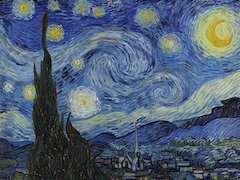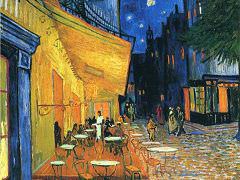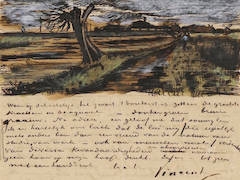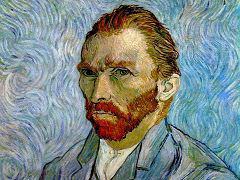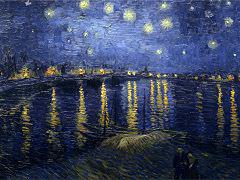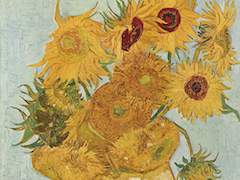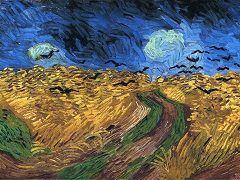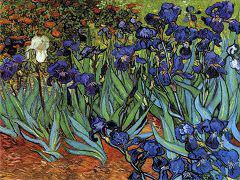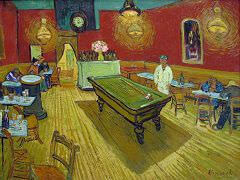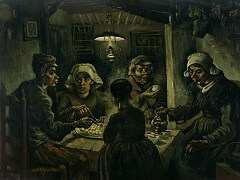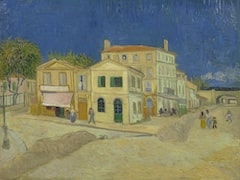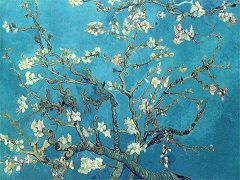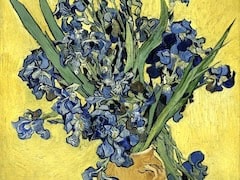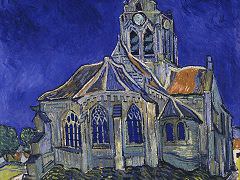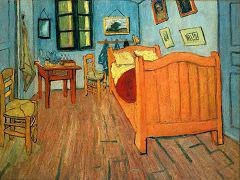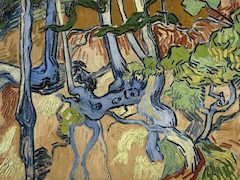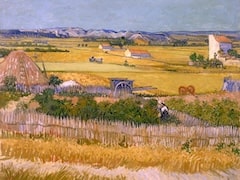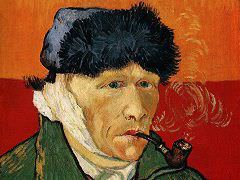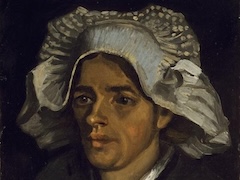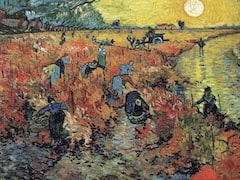The Sower, 1889 by Vincent Van Gogh
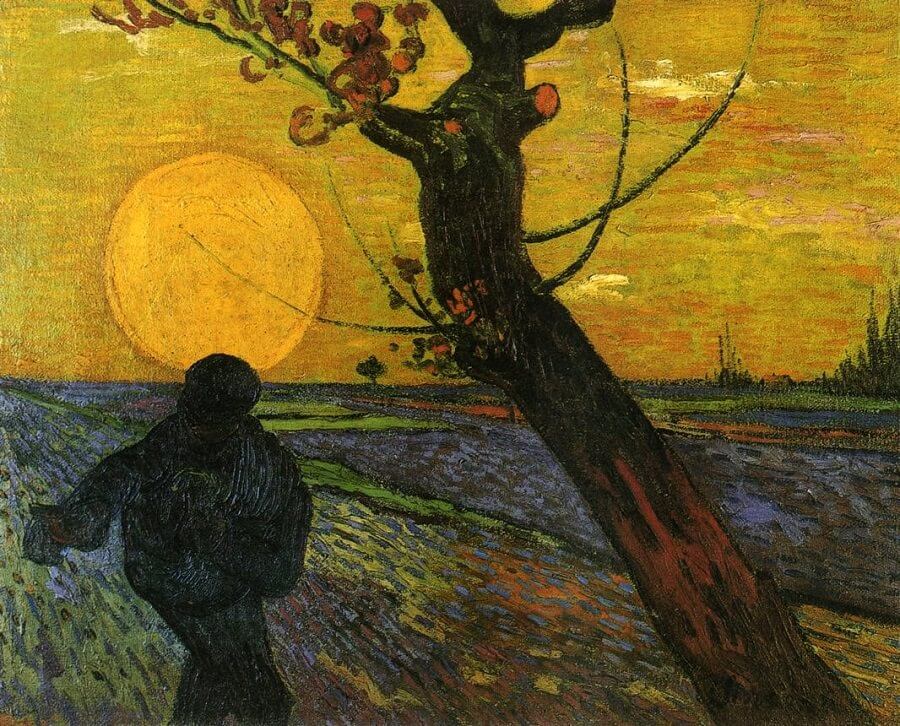
In 1888 Vincent Van Gogh painted a series of pictures of a lonely figure moving across a plowed field, a favorite subject of the artist: a broad gesture of the right hand indicates that sowing is taking place. However, the real protagonist of the paintings, which later became aptly known as The Sower, 1889, is the sun in the horizon, a huge, godlike, bright disk flooding the sky with light. The effect is so strong that colors are inverted and stark complementary colors appear: the sky is painted with yellow and the land with violet. Next year, while Van Gogh lived in an asylum for the mentally ill in Saint Remy, France, he painted similar pictures that later became known as Wheatfield with a Reaper. It is not a rare instance to find celestial bodies in Van Gogh's paintings, the sun, moon or stars, even turbulent galaxies. But the "The Sower" and the Wheatfield with a Reaper are exceptional.
Van Gogh made a number of variations on a theme depicting a sower in front of a setting sun. Especially striking in this version are the bright, unnatural colours and the unusual composition, in which the knotty tree in the foreground constitutes a diagonal division of the canvas. His inspiration for this may have come from a Japanese print.

